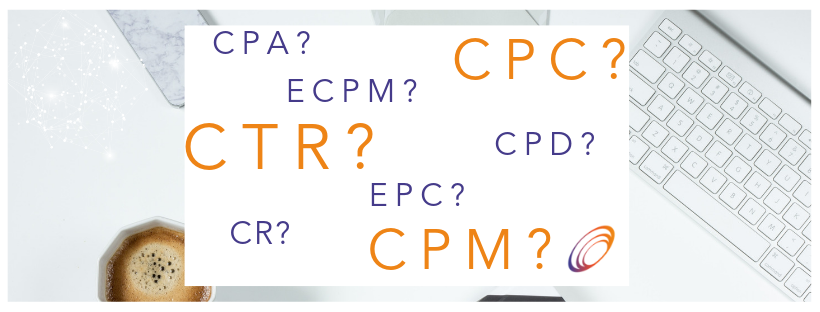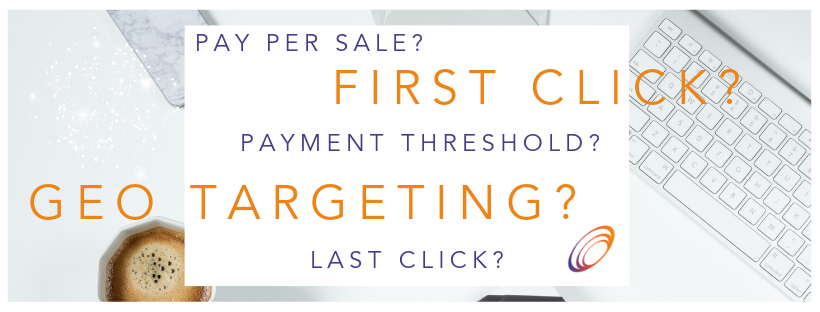
As you may know, the affiliate marketing industry has four basic pillars: the advertisers, the networks, the publishers and the customers. Although it sounds quite obvious at first glance, the truth is, sometimes in can be confusing over who is who, so let’s break it down.
Advertisers
Also known as merchants, retailers or brands, the advertisers are the sellers of the products or services. They use affiliate marketing to promote their merchandise and create brand awareness. This promotion is carried out by publishers that own websites related with the advertiser’s products or services. Advertisers can work directly with publishers or do it through a network.
Networks
The networks or affiliate networks are intermediaries between advertisers and publishers. Although they might seem unnecessary, networks are usually the key both for advertisers and publishers to easily find themselves. Given the amount of websites there are nowadays, it can seem almost impossible for an advertiser to find the correct place to promote its products. The networks find suitable websites for the advertisers, and encourage publishers to promote products or services related with their website
Publishers
Almost any website can become a publisher. Publishers create online content, and provide users with information about topics of interest. Publishers promote advertiser’s products or services on their own website. Although the way publishers benefit from these promotions may vary, the most common way of earning money as a publisher is by receiving commission on the sales the advertisers make through their websites.
Customers
Finally, customers are visitors that end up buying the products or services provided by advertisers, that are being promoted on the publisher’s website.

Below are some of the most common terms you will come across in affiliate marketing, so it’s handy to what they all mean! We have tried to be as exclusive as we can; many other glossaries will hold information on general marketing terms, but we wanted this to be as afilliate makerting centered as we could be!
A | B | C | D | E | F | G | H | I | J | K | L | M | N | O | P | Q | R | S | T | U | V | W | X | Y | Z
A.
Affiliate
An affiliate (sometimes referred to as a publisher or associate) publishes information, content, offers and creatives from a merchant or advertiser on their website in return for a form of remuneration, usually a commission on leads or sales they refer to the merchant website.
Affiliate Network
An affiliate network acts as an intermediary between merchants and affiliates and provides the tracking platform technology to enable data to be collected via a tracked link. Networks liaise between merchants and affiliates to ensure that promotion of the merchant is meeting the terms and conditions set by them. They also provide a web interface allowing affiliates and merchants to track the activity of tracked links. Payments to affiliates also go via affiliate networks.
Affiliate Program
An affiliate program is a structure that an advertiser or merchant has put in place in order to promote their product or service. It can include information on a remuneration package for affiliates and creatives for affiliates to display on their sites and usually is specific to a particular product enabling merchants to have multiple affiliate programmes.
Auto Approval Process
There are two scenarios this could refer to. It’s either the approval process that a merchant or advertiser uses when an affiliate applies to a program, requesting permission to refer traffic to a merchant in return for commission. It can also refer to the auto approval of commissions once an affiliate has been accepted onto a program. Commissions can occasionally be auto approved for any transactions/leads referred by the affiliate, depending on the situation and preference of the merchant/advertiser.
B.
Banner
A web banner is an advert that is placed on a webpage and there are varying types and sizes of advert. Banner adverts can come in various file formats such as GIF, JPEG, PNG, Javascript and more.
Browser
This is the software used to view webpages. Examples of web browsers include Internet Explorer, Chrome, Firefox, Safari and Opera.
C.
Click Through Rate (CTR)
The click through rate compares the amount of visitors that are visiting an affiliate webpage to the amount that are actually performing the desired action of clicking on a merchant’s link/creative. This is displayed as a percentage and is a good way to measure how well the affiliate is converting their traffic. It can be used in conjunction with Conversion Rates to assess where visitors are being lost.
Co-Branding
To increase trust in brands, some merchants will work with affiliates to provide co-branded (displaying both brands) landing pages which visitors are directed to from the affiliate site. An example would be using copy such as “Affiliate_A in partnership with Merchant_A”.
Commission
Commission is the term used to refer to the income an affiliate makes on producing a desired action for a merchant. This can cover many actions, but is generally either a sale, lead, sign-up/subscriber or click. This may also be referred to as a referral fee.
Conversion Rate (CR)
This is a metric used for assessing how well a program is performing between an affiliate and a merchant/advertiser. The conversion rate can refer to the conversion of many things, but is most commonly used to show the amount of visitors or traffic that is being converted from a click on the affiliate site to a sale for the merchant. This is shown as a percentage and is a great way to measure the effectiveness of changes to page design / promotion / content / campaign used by either party.
Cookies
Cookies are small text files that are stored on the visitor’s browser and are used to enable effective tracking of the visitor’s actions on the affiliate and merchant/advertiser sites. They allow tracking of the affiliate webpage visited, the link/creative clicked, the date/time the visitor clicked and was converted and the actions they performed.
Cookie Period
The cookie period or cookie expiration refers to the amount of time that the browser will store cookies for, which is defined by the merchant. Anything occurring outside of this expiration date will not be tracked back to the affiliate’s referral and so the affiliate will not be paid on transactions occurring after the cookie expiration.

Cost Per Acquisition (CPA)
Sometimes referred to as “Cost Per Action”, this is a measurement of the amount paid by an advertiser/merchant to an affiliate for each desired action completed by a visitor. This is usually in the form of a sale or a lead completion.
Cost Per Click (CPC)
CPC refers to the cost that an advertiser pays for every click on their tracked link. This is commonly used when advertising through ad systems like Google Adwords but can also be used in affiliate marketing. It is however a less popular metric as most affiliate marketing is based on being remunerated for an action which produces a more definite revenue for the advertiser, rather than a click, which while valuable is not an absolute measurement of revenue derived.
Cost Per Day (CPD)
This is another way of charging for advertising. This method is not so popular any more and tends to be used for display advertising rather than advertising on an affiliate/commission basis.
Cost Per Lead (CPL)
CPL is a pricing model based on advertisers only paying for direct leads in the form of a qualified sign-up for example. It does not take impressions or clicks into account
Cost Per Mille (CPM)
CPM translated means “Cost Per Thousand Impressions” and is a metric often used for an advertiser to pay for display advertising, the aim of which is more along the lines of creating a brand awareness. A page impression is counted every time a page is loaded in a web users browser.
Creative
A creative is a general term referring to the image/media file displayed on an affiliate webpage. This can include banners, videos and rich media files such as interactive “rollover” adverts or adverts using sound, video or animation to grab the visitors attention. It can also include text links and logos/standard images.
D.
Deep Link
A deep link is an affiliate link which directs the visitor to a webpage “deep” within the merchant site and is often used to increase conversions by decreasing the click journey made by the visitor and increasing the relevancy depending on what product or service the affiliate is recommending. It essentially directs a visitor to any page other than the homepage.
E.
Earnings Per Click (EPC)
This is a commonly used metric for working out how much commission is payable to an affiliate for each click that has been performed on their tracked link. It can also sometimes be used to show how much a merchant has generated in revenue for each click that an affiliate has referred to them.
Effective Cost Per Mille (eCPM)
Translated this means “Effective Cost Per Thousand Impressions” Essentially it is a measure of what would be earned per thousand impressions but is used in place of CPM when CPM cannot be worked out for any reason. This can include a situation when 1,000 impressions have not been served but you want to work out which ad you are using is most profitable from an impression basis.

F.
Fired Pixel
This means that a click ID has been generated. When a customer clicks on a link, a piece of code in the background makes note that the link was clicked. This is how you can see how many clicks a link has had.
First Click
This relates to your cookie period. For instance, a customer clicks a link on your site to purchase something from an advertiser. They then decide not to and click off elsewhere. If they were then to go back to the advertiser directly to purchase, you could still have that first click attribution (i.e. still get your commission) if your cookie period covers the time that has lapsed. On the basis that they haven’t cleared their cookies in that time.
Frequency Capping
We don’t want to bore customers with the same ad over and over again. Frequency capping is a way of defining ad impressions within a specific time frame so that the customer doesn’t see the same ad on repeat too often.
G.
Geo-targeting
This is the way you can identify a customers location in the world based on their IP address. It can be useful if you are running campaigns in various countries, or would like to see how your campaign is doing in various locations of the country you are in.
H.
Hyperlink
You can chose how you want to display your affiliate links; via text or images/creatives are the most common. If a hyperlink is used with text, it’s usually highlighted so the customer can see they will be taken to another page. You can set your links to open in the same page or in a new page if you prefer.
I.
Impression
An impression or page impression is recorded every time a page is loaded. It is an effective way of measuring the amount of times that a page and the content and ads on that page are viewed.

L.
Last Click
This is the opposite to First Click. This is where you only give attribution to the last click that resulted in a sale and this usually refers to ads. As in, the attribution will be given to the last ad that triggered the click through to sale; this ignores any other ads the customer may have seen and previously clicked prior to the one that resulted in their purchase.
M.
Manual Approval Process
This can refer to two scenarios. The first being the approval process employed by the merchant when deciding whether to accept an affiliate onto their affiliate program. Many merchants like to manually check the affiliate site is a good match for their product or service before acceptance. It can also refer to the manual approval of transactions or actions before commission is approved for payment to the affiliate.
Merchant
Also referred to as an advertiser, a merchant promotes their products and services through an Affiliate’s or Publisher’s website via a tracking link. The merchant pays or remunerates the affiliate for this promotion usually in the form of commission for sales or leads sent via the affiliate site.
P.
Pay per Lead (PPL)
This a model in which the advertisers pay the publishers for each lead they create. Leads can be defined as downloads, signs up, free trials and more.
Pay per Sale (PPS)
Similar to the above this model is when the publisher is paid when they make a sale of a product or service.
Payment Threshold
This is a limit set by individual affiliate networks so will differ from each platform. This refers to the minimum amount of commission you can earn before you can withdraw it / have it paid to you.
Performance Incentive
A performance incentive is given to affiliates occasionally by merchants to encourage the affiliate to push the merchant’s products, services or site more effectively. This can take on any form of incentive but common methods will be prizes for extra sales, or tiered commission structures which usually define a target transaction or transaction value to be met in order to receive extra “bonus” commissions, often for a limited time.
Pre-Qualified Visitors
The process of pre-qualifying a visitor is a way of the affiliate trying to make sure that the potential customer they are targeting with their promotions is as likely as possible to perform the required action for the merchant. There are many methods of pre-qualifying customers, and these will often be based around combining targeted marketing with as much relevant information as possible about the merchant’s product or service, and trust in the affiliate site, information and opinions.
R.
Recurring Commissions
Merchants may sometimes choose to reward affiliates on a recurring basis, where the product or service the affiliate has promoted charges the customer on a recurring basis. This will usually be done by rewarding the affiliate with a percentage of the customer’s regular fee.
S.
Segments
Segments are ways in which you can group the paths in which customers take to your site. You can segment by device used, country, channel for example, all of which are good ways to get an idea of where your customers and sometimes what they are looking for. This can in turn allow you to target or optimise future campaigns for the different segments.
Super Affiliate
The term super affiliate refers to the best performing affiliates. It can expected that around 1% of all affiliates are super affiliates, and typically that 1% will bring in around 90% of a merchants sales.
T.
Targeted Marketing
This term refers to targeting a marketing campaign to make it as effective as possible. In short, it is the best way to makes sales and requires bringing together the right product/service, at the right time, and making the right potential customer aware of it.
Targeted Traffic
Knowing your customers, or having a good idea of what your ideal customer would be, is a great tool when it comes to marketing. With the use of cookies, social platform pixels and ads, you can specifically target types of people you see as an ideal customer to get your product in front of them.
Tracked Link
Sometimes referred to as a “tracking link”, “affiliate link” or sometimes “text link”, a tracked link is a clickable link which is most usually placed on a publisher’s webpage and directs traffic through to a merchant’s webpage where an action is likely to be performed in return for commission to the referring publisher site. The tracked link’s origin is traceable using various parameters added to the HTML code in the hyperlink.
Two Tier Program
This term can refer to a program that allows affiliates to recruit their own affiliates who allow the original affiliate to make commission on their own promotions as well as a percentage of the actions the recruited affiliate makes. This is also known as Multi-level marketing (MLM)
V.
Viral Marketing
Refers to the rapid adoption of a product or service through word of mouth, email or via social networks. Often beginning with an inventive way of making people aware of something as quickly as possible by doing something “a little bit different” which encourages a branching out or spreading of the word in the same way a virus would spread rapidly. This is usually a very cheap way for advertisers to promote themselves or their products, but hard to instigate if creative ideas don’t flow easily!
